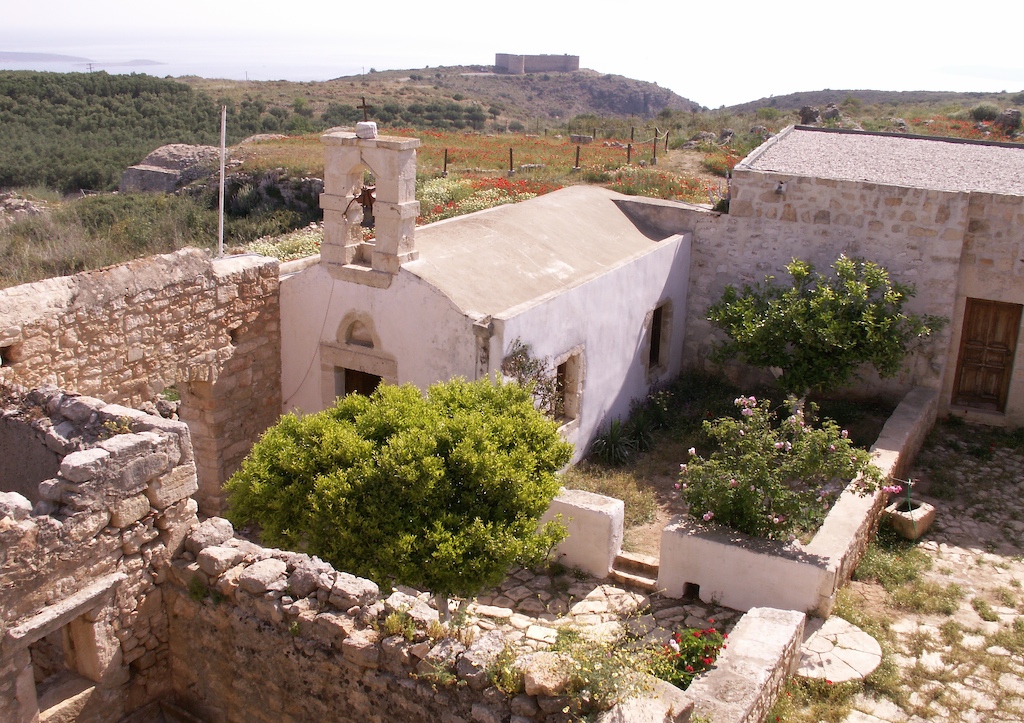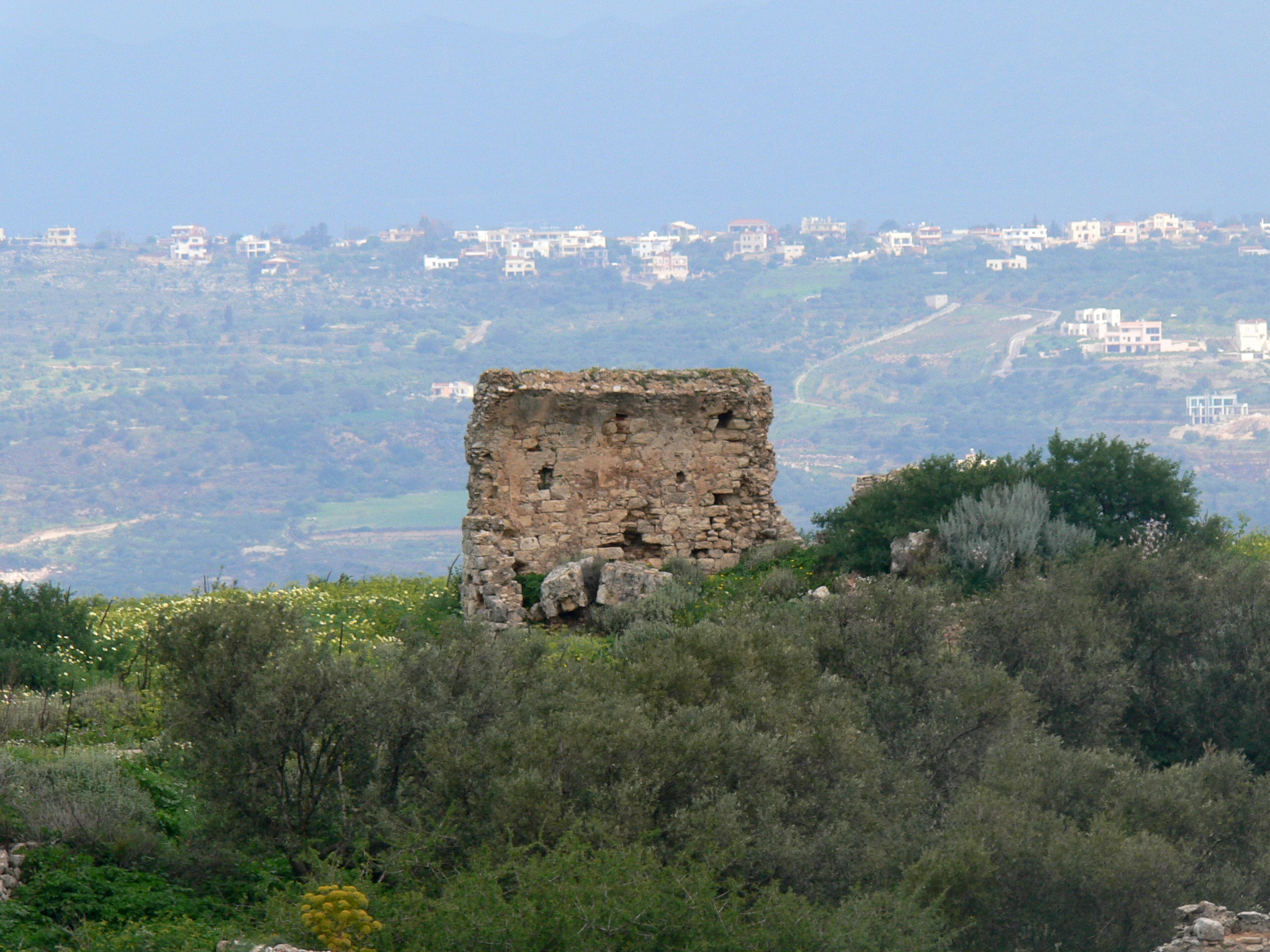Aptera, Greece on:
[Wikipedia]
[Google]
[Amazon]
 Aptera ( or ) or Apteron was an ancient city, now an archaeological site in Kalives in western
Aptera ( or ) or Apteron was an ancient city, now an archaeological site in Kalives in western
 In the third century BC, Aptera was at war with
In the third century BC, Aptera was at war with
C. Michael Hogan, ''Cydonia'', The Modern Antiquarian, Jan. 23, 2008The ancient city of Aptera
* {{Authority control Populated places in Chania (regional unit) Chania Ancient Greek archaeological sites in Crete Minoan sites in Crete Populated places in ancient Crete Former populated places in Greece Cretan city-states Souda Bay
 Aptera ( or ) or Apteron was an ancient city, now an archaeological site in Kalives in western
Aptera ( or ) or Apteron was an ancient city, now an archaeological site in Kalives in western Crete
Crete ( ; , Modern Greek, Modern: , Ancient Greek, Ancient: ) is the largest and most populous of the Greek islands, the List of islands by area, 88th largest island in the world and the List of islands in the Mediterranean#By area, fifth la ...
, a kilometre inland from the southern shore of Souda Bay, about 13 km east of the city of Chania
Chania (, , ), also sometimes romanization of Greek, romanized as Hania, is a city in Greece and the capital of the Chania (regional unit), Chania regional unit. It lies along the north west coast of the island Crete, about west of Rethymno ...
in the municipality of Chania
Chania (, , ), also sometimes romanization of Greek, romanized as Hania, is a city in Greece and the capital of the Chania (regional unit), Chania regional unit. It lies along the north west coast of the island Crete, about west of Rethymno ...
.
History
It is mentioned (A-pa-ta-wa) inLinear B
Linear B is a syllabary, syllabic script that was used for writing in Mycenaean Greek, the earliest Attested language, attested form of the Greek language. The script predates the Greek alphabet by several centuries, the earliest known examp ...
tablets from the 14th-13th centuries BC. With its highly fortunate geographical situation, the city-state was powerful from Minoan
The Minoan civilization was a Bronze Age culture which was centered on the island of Crete. Known for its monumental architecture and Minoan art, energetic art, it is often regarded as the first civilization in Europe. The ruins of the Minoan pa ...
through Hellenistic
In classical antiquity, the Hellenistic period covers the time in Greek history after Classical Greece, between the death of Alexander the Great in 323 BC and the death of Cleopatra VII in 30 BC, which was followed by the ascendancy of the R ...
times, when it gradually declined. However, the Minoan settlement of the Bronze Age was located about 1.5 km away from Aptera, at the place of the modern Stylos settlement.
In Greek mythology
Greek mythology is the body of myths originally told by the Ancient Greece, ancient Greeks, and a genre of ancient Greek folklore, today absorbed alongside Roman mythology into the broader designation of classical mythology. These stories conc ...
, Aptera was the site of the legendary contest between the Sirens and the Muses
In ancient Greek religion and Greek mythology, mythology, the Muses (, ) were the Artistic inspiration, inspirational goddesses of literature, science, and the arts. They were considered the source of the knowledge embodied in the poetry, lyric p ...
, when after the victory of the Muses, the Sirens lost the feathers of their wings from their shoulders, and having thus become white, cast themselves into the sea. The name of the city literally means "without wings", and the neighbouring islands Leucae means "white".
 In the third century BC, Aptera was at war with
In the third century BC, Aptera was at war with Kydonia
Kydonia ( or ), also known as Cydonia (, ''Kydōnía'') was an ancient city located at the site of present-day Chania near the west end of the island of Crete in Greece. The city is known from archaeological remains dating back to the Minoan e ...
,Hogan, 2008 a prominent ancient city in northwestern Crete
Crete ( ; , Modern Greek, Modern: , Ancient Greek, Ancient: ) is the largest and most populous of the Greek islands, the List of islands by area, 88th largest island in the world and the List of islands in the Mediterranean#By area, fifth la ...
. In much of the Greek Archaic Period, Aptera was under the control of Kydonia. During the Lyttian War in 220 BC, Aptera was at one time in alliance with Knossos
Knossos (; , ; Linear B: ''Ko-no-so'') is a Bronze Age archaeological site in Crete. The site was a major centre of the Minoan civilization and is known for its association with the Greek myth of Theseus and the minotaur. It is located on th ...
but was afterwards compelled by the Polyrrhenians to side with them against that city. The port of Aptera according to Strabo
Strabo''Strabo'' (meaning "squinty", as in strabismus) was a term employed by the Romans for anyone whose eyes were distorted or deformed. The father of Pompey was called "Gnaeus Pompeius Strabo, Pompeius Strabo". A native of Sicily so clear-si ...
was Cisamus.
It was destroyed by earthquake
An earthquakealso called a quake, tremor, or tembloris the shaking of the Earth's surface resulting from a sudden release of energy in the lithosphere that creates seismic waves. Earthquakes can range in intensity, from those so weak they ...
during the 7th century. By the 12th century, a monastery
A monastery is a building or complex of buildings comprising the domestic quarters and workplaces of Monasticism, monastics, monks or nuns, whether living in Cenobitic monasticism, communities or alone (hermits). A monastery generally includes a ...
of St. John Theologos had been built on the site; it continued in operation until 1964. The site is now maintained by the Greek Ministry of Culture, Department of Antiquities. The hilltop, about 150 metres above the sea, commands views of Souda Bay and the Akrotiri Peninsula to the north, the Lefka Ori (White Mountains) to the south, and Kalives and the Turkish Izzedin Fortress to the east; the city of Chania
Chania (, , ), also sometimes romanization of Greek, romanized as Hania, is a city in Greece and the capital of the Chania (regional unit), Chania regional unit. It lies along the north west coast of the island Crete, about west of Rethymno ...
is not quite visible to the west.
There are several structures within the square monastery enclosure,Taylor, 1863 including a chapel and a two-story block of monks' cells. The surrounding site is notable for a two-part temple from the 5th century BC, a large three-vaulted Roman cistern
A cistern (; , ; ) is a waterproof receptacle for holding liquids, usually water. Cisterns are often built to catch and store rainwater. To prevent leakage, the interior of the cistern is often lined with hydraulic plaster.
Cisterns are disti ...
, Roman baths, and parts of several Doric temples. An ancient theater and a Roman peristyle villa have also been discovered on the site.
See also
* Khania PlainReferences
Further reading
*Bayard Taylor, ''Travels in Greece and Russia: With an Excursion to Crete'', 1863, G.P. Putnam, 426 pagesC. Michael Hogan, ''Cydonia'', The Modern Antiquarian, Jan. 23, 2008
* {{Authority control Populated places in Chania (regional unit) Chania Ancient Greek archaeological sites in Crete Minoan sites in Crete Populated places in ancient Crete Former populated places in Greece Cretan city-states Souda Bay